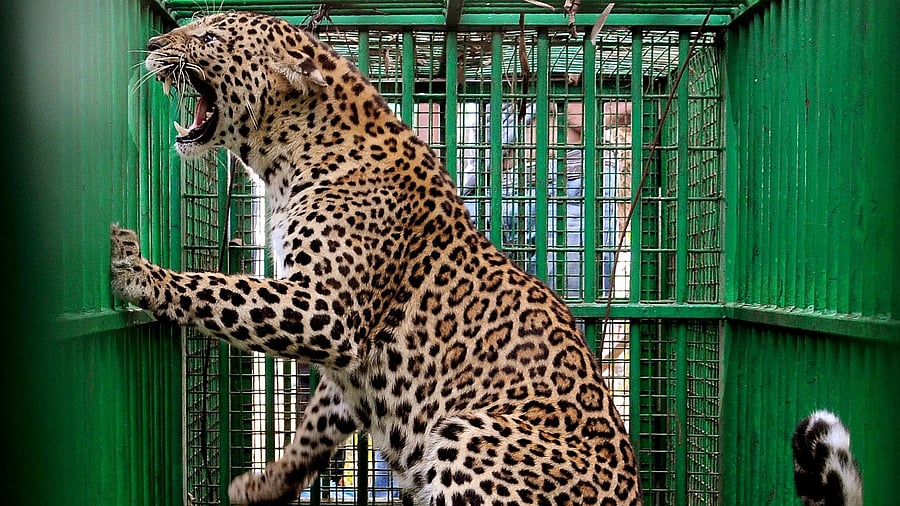
Credit: Special Arrangement
Hubballi: The Raichur forest officials are using a worrying method — spraying of female scent (urine )— to attract leopards, capture and translocate them.
Experts say shifting a predator from its natural habitat itself is wrong, as it adversely impacts ecological balance, while highlighting the unscientific method being used.
A Raichur-based researcher, who had earlier worked with the department to mitigate human-animal conflict, says it is using this “unscientific” method in and around the natural habitats of leopards as the big cats have been lifting cattle and stray dogs from human settlements.
He says all four leopards that were captured by the department near Maliyabad, Manvi and surrounding natural habitats in Raichur district in recent times were snared through the method of spraying scent.
Officials collect urine of captive female leopards from the zoo and spray it near the cage and the animal path to lure the leopard to the cage.
“Not all leopards in and around Maliyabad and surrounding areas are cattle lifters. There is sufficient prey-base like wild-boar, peacocks, hares and smaller mammals inside the hills and forest patches for survival of leopards. By spraying scent, you are also drawing non-conflict leopards to human habitats,” the researcher says.
Forest officials say it had become necessary for them to ‘rescue’ the leopards as they had turned cattle lifters.
Raichur has one of the least presence of leopards in Karnataka. Wildlife experts believe that less than five or six leopards are roaming in hillocks and scrub forest patches of Maliyabad, D-Rampura, Manvi and nearby places.
“In the last four years, there hasn’t been a single report of leopard killing or harming humans in Raichur. On the contrary, last year more than hundred people stoned and caned to death a male leopard that had strayed into a village near Devadurga,” said the researcher, requesting anonymity.
Yet, at least four leopards have been captured using the scent method, he said.
He says there have been incidents where male leopards have sat next to the cages (sprayed with female scent) for weeks, expecting a female for mating.
“This method can create a conflict, where none exists,” said the researcher.
Conservation biologist Sanjay Gubbi says his team’s work in 13 reserved forests in Raichur division has shown that leopard numbers in Raichur are extremely low.
“Ex-gratia should be paid at the earliest with regard to conflict due to livestock killing. However, capturing and translocation of leopards is not a solution as it will shift the conflict from one place to another. If translocation continues, Raichur will see enhanced human-leopard conflict, like it is happening in places where such large-scale translocations are happening,” he said.
He said awareness campaigns among communities about human-leopard conflict and the negative issues related to translocation have to be undertaken as an urgent measure.
Raichur Deputy Conservator of Forests Suresh Babu acknowledged that there had been no reports of leopards attacking humans, but denied that the scent spraying method was used to capture leopards.
“We have placed cages to capture leopards only in human-dominated places. The four leopards that were captured had turned cattle lifters. To mitigate conflict, we had to capture them. The last leopard that was captured was next to a primary school,” he said.
Babu said translocation was the last resort for department officials in mitigating human-animal conflict.
“However, since the natural habitat of leopards is next to human-dwelling places, we are forced to place cages,” he said.